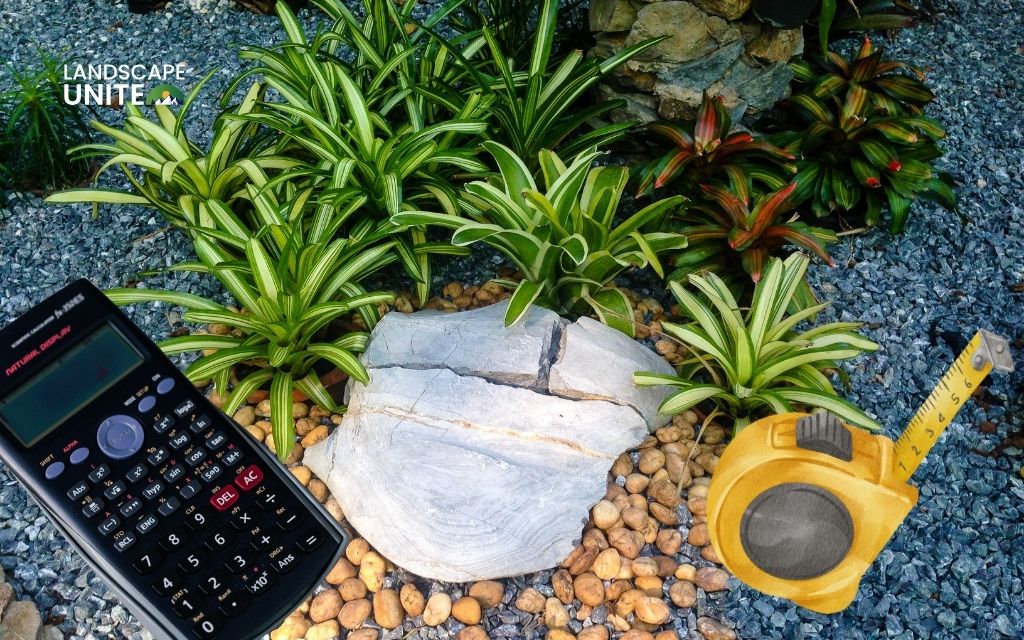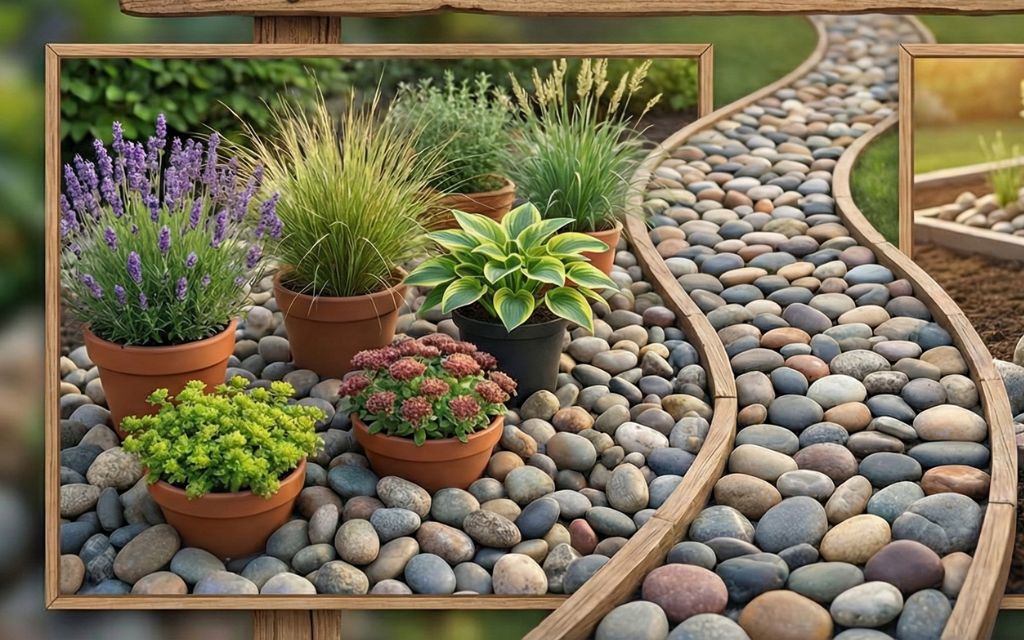Fall yard clean up is far more than just raking leaves – it’s a comprehensive maintenance approach that prevents common problems like pest infestations, mold growth, lawn diseases, and costly drainage issues that can devastate your landscape investment.
This comprehensive guide walks you through everything you need to accomplish during your fall yard clean-up, incorporating eco-friendly practices and budget-conscious options that deliver professional results.
Ready to transform your fall cleanup routine? Keep reading to discover the 12 essential tasks that will protect your investment and save you time and money next year.
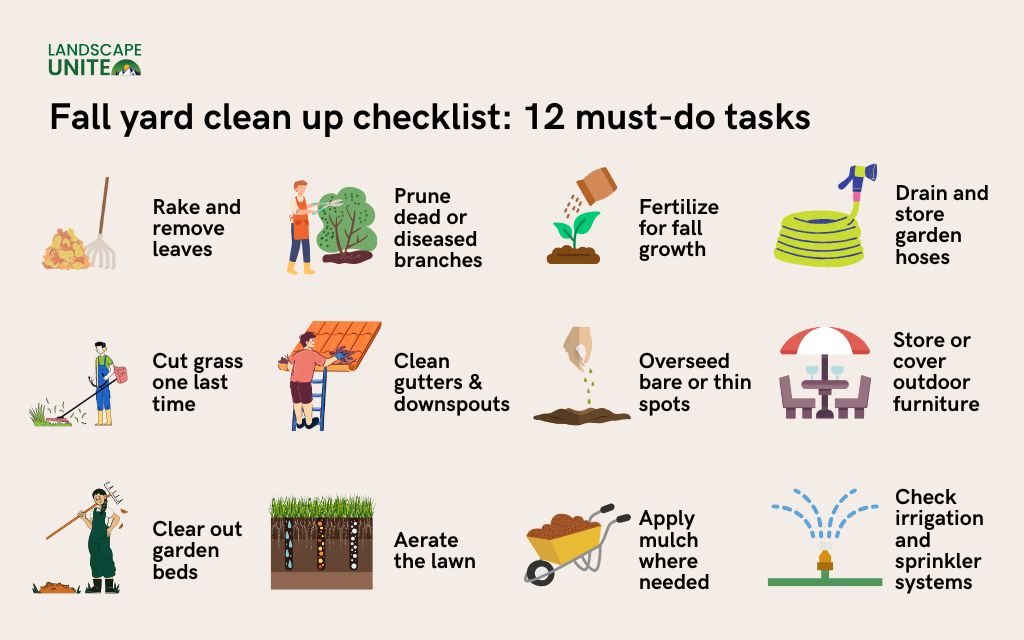
Fall yard clean up checklist: 12 must-do tasks
Rake and remove leaves
Leaf removal stands as the cornerstone of effective fall yard cleanup.
While a light layer of leaves can provide natural nutrients, thick accumulations create serious problems for your lawn’s health. Heavy leaf coverage blocks essential sunlight and air circulation, causing grass to suffocate and creating conditions for fungal diseases.
For disposal, consider your local regulations and environmental impact. Many municipalities offer curbside leaf collection programs that convert yard waste into valuable compost. If bagging is necessary, use biodegradable bags when possible.
The most sustainable approach involves creating your own compost pile, turning this “waste” into rich soil amendment for next year’s garden projects.
Cut grass one last time
Your final mowing of the season requires precision to set your lawn up for winter success.
The ideal height for most cool-season grasses ranges between 2.5 to 3 inches. This measurement promotes healthy root development while preventing the matting and disease issues associated with overly long grass.
Timing proves crucial for this final cut. Aim to complete your last mow when grass growth significantly slows but before hard frost arrives. In most regions, this window falls in late October to early November, though southern areas may extend into December.
Clear out garden beds
Focus on removing dead annuals, invasive weeds, and any diseased plant debris that could harbor pathogens through winter months.
Dead-heading spent perennials serves multiple purposes beyond aesthetics. Removing seed heads prevents unwanted self-seeding while redirecting plant energy toward root development.
However, consider leaving ornamental grasses and plants with attractive seed heads, as these provide winter interest and valuable wildlife food sources.
After clearing debris, apply a 2-to-3-inch layer of organic mulch around perennials, bulbs, and tree bases. Quality mulch materials include shredded bark, compost, or chopped leaves.
This insulating layer moderates soil temperature fluctuations, retains moisture, and suppresses weed germination. Keep mulch several inches away from plant stems to prevent pest and disease issues.
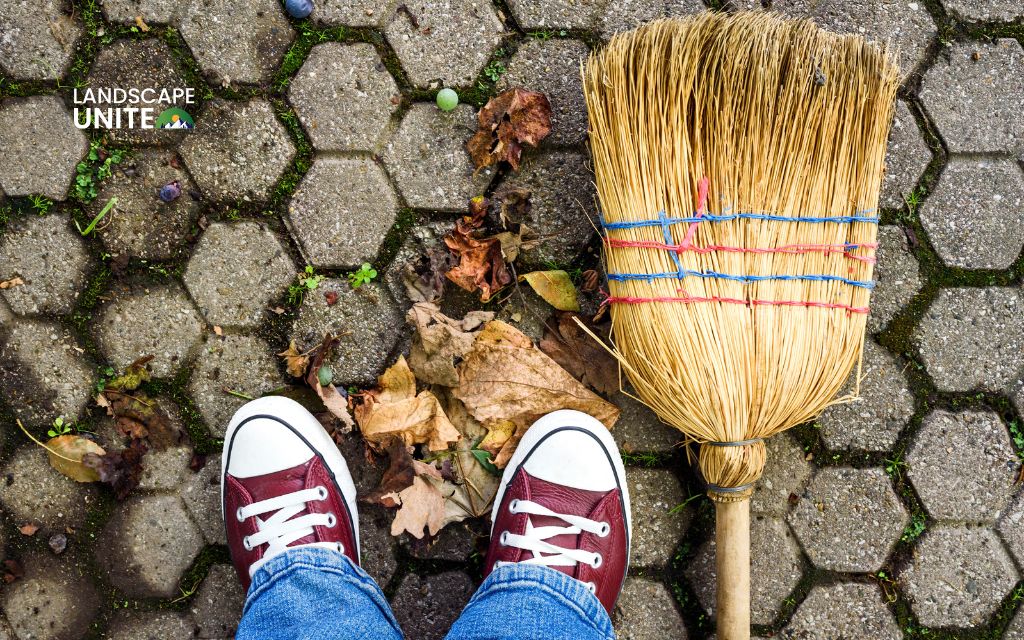
Prune dead or diseased branches
Concentrate pruning efforts on deciduous trees and shrubs after leaf drop, when branch structure becomes clearly visible.
Remove crossing branches, water sprouts, and any growth showing signs of disease or insect damage. Make clean cuts just outside the branch collar using sharp, sterilized tools to promote proper healing.
Exercise caution with spring-blooming shrubs like lilacs, forsythia, and hydrangeas. These plants set their flower buds during late summer and fall, so extensive pruning eliminates next year’s blooms.
Limit intervention to removing dead or severely damaged wood, saving major shaping for immediately after spring flowering.
Clean gutters and downspouts
Gutter maintenance represents one of the most critical yet overlooked aspects of fall yard cleanup. Clogged gutters create multiple problems including ice dam formation, basement flooding, foundation damage, and landscape erosion.
Begin by removing all debris from gutters, including leaves, twigs, and accumulated sediment. Use a narrow trowel or gutter scoop for efficiency, working systematically along each section. Pay special attention to downspout openings, where blockages commonly occur.
After debris removal, flush gutters and downspouts with water to identify remaining clogs and verify proper drainage.
Aerate the lawn
Lawn aeration addresses soil compaction that develops throughout the growing season from foot traffic, equipment use, and natural settling. Compacted soil prevents proper water, air, and nutrient penetration, leading to shallow root systems and poor drought tolerance.
Fall aeration timing proves ideal for cool-season grasses, which experience their most active growth period during autumn months. Schedule aeration for early-to-mid fall when soil moisture levels are adequate but not saturated.
Avoid aeration during dry conditions or when soil is muddy.
Fertilize for fall growth
Fall fertilization supports root development and carbohydrate storage that fuels spring green-up and summer stress tolerance. Cool-season grasses benefit significantly from autumn feeding, as they naturally focus energy on root growth rather than top growth during cooler temperatures.
Apply fertilizer to slightly moist soil for optimal uptake, ideally 6 – 8 weeks before hard frost. Water lightly after application if rain isn’t expected within 48 hours.
This timing allows grass plants to absorb nutrients and strengthen root systems before entering winter dormancy.
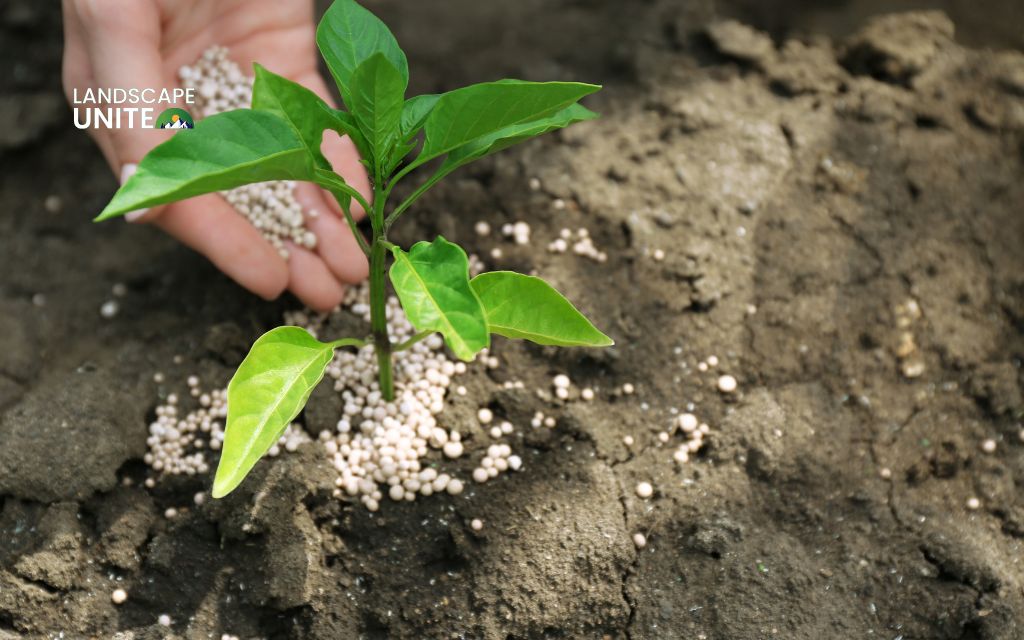
Overseed bare or thin spots
Fall overseeding takes advantage of ideal growing conditions for cool-season grass establishment. Cooler air temperatures, warm soil, and increased moisture create perfect germination conditions while reducing competition from summer weeds and heat stress.
Maintain consistent soil moisture throughout the germination period, typically 7-14 days depending on grass type and weather conditions. Light, frequent watering works better than heavy, infrequent applications.
Avoid mowing newly seeded areas until grass reaches at least 3 inches height, ensuring adequate establishment before winter.
Apply mulch where needed
Strategic mulching provides multiple benefits including temperature moderation, moisture retention, weed suppression, and soil improvement. Focus mulching efforts around trees, shrubs, perennial beds, and newly planted areas that require extra winter protection.
Choose organic mulch materials like shredded bark, wood chips, compost, or processed leaves. These materials decompose gradually, improving soil structure and providing nutrients.
Avoid dyed mulches and fresh wood chips, which can temporarily tie up soil nitrogen or introduce unwanted chemicals.
Drain and store garden hoses
Disconnect all hoses from spigots and drain completely by holding one end high while allowing water to flow from the opposite end. Coil hoses loosely to prevent kinking and store in protected areas like garages, basements, or sheds.
Consider investing in frost-proof spigots for added protection in extremely cold climates.
Remove and store any attachments including sprinklers, nozzles, and timers. These components often contain small water reservoirs that can freeze and cause damage.
Clean equipment before storage and perform any necessary maintenance to ensure optimal performance next spring.
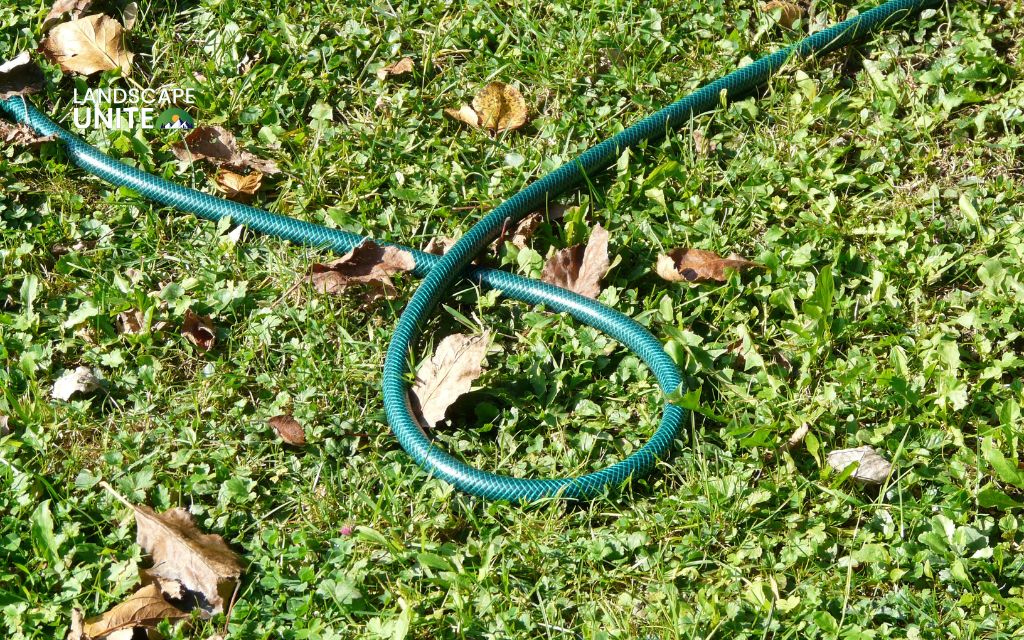
Store or cover outdoor furniture
Outdoor furniture, grills, and decorative items require protection from winter weather to maintain appearance and extend service life. UV exposure, moisture, and freeze-thaw cycles cause fading, cracking, and structural damage to unprotected items.
Clean all outdoor furniture thoroughly before storage, removing dirt, grease, and organic debris that can cause staining or attract pests. Allow items to dry before covering or storing. Use breathable covers that prevent moisture buildup.
Store cushions, umbrellas, and fabric components indoors whenever possible. For large items that must remain outdoors, invest in high-quality covers designed for your specific furniture types and climate conditions.
Check irrigation and sprinkler systems
Irrigation system winterization prevents expensive freeze damage to pipes, valves, and sprinkler heads. Even small amounts of trapped water can cause significant damage when temperatures drop below freezing.
In freeze-prone zones, schedule professional system blow-out services or rent appropriate equipment for DIY winterization.
This process uses compressed air to remove water from all system components. Shut off water supplies and drain any accessible components manually.
Eco-friendly fall cleanup tips
Adopt sustainable practices that protect the environment while maintaining a beautiful yard:
- Compost leaves and plant waste: Create nutrient-rich soil amendment by layering green materials (grass clippings) with brown materials (leaves)
- Use manual or electric tools: Choose rakes, hand pruners, and electric blowers over gas-powered equipment to reduce emissions and noise
- Select native mulch materials: Opt for local shredded hardwood, pine needles, or processed leaves instead of dyed wood chips
- Avoid chemical treatments: Use organic fertilizers and natural pest control methods to protect soil and water quality
- Recycle through local programs: Take advantage of municipal yard waste collection that converts debris into community compost
- Leave beneficial debris: Keep some leaf litter in garden beds to provide habitat for beneficial insects and natural soil protection
- Choose biodegradable bags: When bagging is necessary, use compostable bags that break down naturally
- Mulch leaves in place: Use a mulching mower to chop leaves directly on the lawn, providing natural fertilizer
Why fall yard cleanup matters
Prevents matting and fungal diseases
Leaf matting under snow creates anaerobic conditions that promote snow mold, dollar spot, and other lawn diseases. Proper fall cleanup eliminates these disease-breeding environments and maintains healthy grass ecosystems.
Reduces pest habitat and breeding sites
Thick vegetation and debris piles provide overwintering shelter for ticks, voles, and other harmful pests. Removing these harboring areas significantly reduces pest populations and protects both plants and family health.
Prepares grass for healthy spring regrowth
Well-maintained lawns entering dormancy properly green up faster in spring, resist diseases more effectively, and require less water and fertilizer throughout the growing season.
Improves curb appeal and property value
Consistent fall maintenance demonstrates responsible ownership and can impact property values by thousands of dollars. Clean, well-prepared landscapes attract quality buyers and tenants while signaling professional care standards.

When to start fall cleanup
Start Time: Begin once leaves start falling and continue through early November.
Start cleanup when approximately 50% of total leaf drop has occurred – typically late September in northern climates and October in southern regions.
Schedule major tasks during dry conditions when leaves are lighter and easier to manage. Save lighter maintenance for overcast days. Break cleanup into multiple weekend sessions rather than attempting everything at once. Prioritize time-sensitive tasks like gutter cleaning and irrigation winterization first.
Conclusion
Comprehensive fall yard cleanup encompasses a systematic approach to seasonal property maintenance that protects your landscape investment. Understanding the full scope helps homeowners plan effectively and achieve professional results.
With smart planning, the right tools, and dedicated effort, you can establish the foundation for a thriving spring landscape. Consistent fall maintenance saves time, money, and ensures your yard emerges healthy and beautiful next year.
Discover more expert landscaping strategies and seasonal maintenance guides in our extensive resource library to maintain your property’s beauty throughout every season.
Frequently asked questions (FAQs)
What is typically included in a fall clean up?
Fall cleanup typically includes leaf removal, final lawn mowing, garden bed clearing, tree/shrub pruning, gutter cleaning, lawn aeration, fertilizing, overseeding, mulching, and winterizing irrigation systems and outdoor equipment.
How much does a fall yard cleanup cost?
Fall yard cleanup costs range from $150-$500+ depending on property size and scope of work. Small yards cost $150-$250, medium properties $250-$400, and large landscapes $400-$800 or more for comprehensive services.
What should I put down on my lawn in the fall?
Apply fall fertilizer (nitrogen-rich, slow-release), overseed thin areas with cool-season grass seed, and ensure proper soil aeration. Avoid heavy mulch directly on grass – save mulching for garden beds and around trees.
What’s better, fall clean ups or leaf removal?
Comprehensive fall cleanup is better than just leaf removal. While leaf removal addresses immediate issues, full cleanup includes essential tasks like fertilizing, aerating, and winterizing that protect your entire landscape investment.
How much per hour for leaf cleanup?
Professional leaf cleanup services charge $25 – $50 per hour for labor, though most companies price by project scope rather than hourly rates. DIY costs only your time plus equipment rental ($30 – $50/day for blowers).
